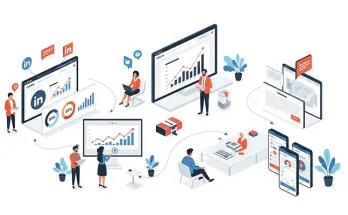In recent years, mobile payment solutions have emerged as a powerful tool for promoting financial inclusion in Southeast Asia. With the widespread adoption of smartphones and the rapid growth of digital economies in the region, mobile payment platforms are revolutionizing the way people access and use financial services. This article explores how mobile payment solutions are driving financial inclusion in Southeast Asia and changing the landscape of banking and commerce in the region.
1. Enhanced Access to Financial Services
One of the key ways that mobile payment solutions are driving financial inclusion in Southeast Asia is by providing individuals with increased access to financial services. In many parts of the region, traditional banking services are limited, making it difficult for people to open accounts, access credit, or make digital transactions. Mobile payment solutions bridge this gap by offering a convenient and secure way for individuals to manage their finances, transfer money, and make payments using their smartphones.
2. Empowering the Unbanked Population
Mobile payment solutions are particularly beneficial for the unbanked population in Southeast Asia, who have historically been excluded from the formal financial system. By leveraging mobile technology, individuals who do not have access to traditional banking services can now participate in the digital economy, receive salaries, access credit, and save money through mobile payment platforms. This empowerment of the unbanked population is instrumental in reducing poverty and promoting economic growth in the region.
3. Driving Financial Literacy and Inclusion
Mobile payment solutions also play a crucial role in promoting financial literacy and inclusion among the population in Southeast Asia. Through user-friendly interfaces, educational resources, and access to a wide range of financial services, mobile payment platforms help individuals better understand and manage their finances. This increased financial literacy empowers users to make informed decisions, save money, and invest in their future, ultimately contributing to economic development and prosperity.
4. Supporting Small Businesses and Entrepreneurship
Mobile payment solutions are not only benefiting individuals but also small businesses and entrepreneurs in Southeast Asia. By offering secure and efficient payment solutions, mobile platforms enable small businesses to accept digital payments, reach a wider customer base, and streamline their operations. This increased access to digital commerce opportunities supports entrepreneurship and economic growth in the region, creating a thriving ecosystem of innovation and business development.
5. Fostering Innovation and Collaboration
The rise of mobile payment solutions has led to a wave of innovation and collaboration in the financial services industry in Southeast Asia. Fintech companies, telecommunications providers, and traditional banks are joining forces to develop new payment solutions, expand digital services, and improve financial access for the underserved population. This spirit of collaboration and innovation is driving positive change in the region, transforming the way people engage with financial services and shaping the future of banking in Southeast Asia.
Mobile payment solutions are playing a transformative role in driving financial inclusion in Southeast Asia, empowering individuals, supporting small businesses, and fostering economic growth in the region. By providing enhanced access to financial services, empowering the unbanked population, promoting financial literacy, supporting entrepreneurship, and fostering innovation, mobile payment platforms are revolutionizing the way people manage their finances and participate in the digital economy. As Southeast Asia continues to embrace mobile technology and digital solutions, the impact of mobile payment platforms on financial inclusion is expected to grow, opening up new opportunities for individuals and businesses across the region.





